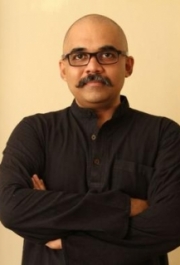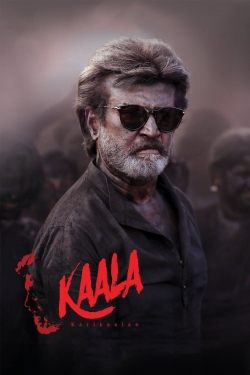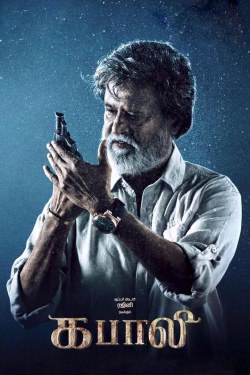Baradwaj Rangan
Top Rated Films
Baradwaj Rangan's Film Reviews
-
In the midst of filmmakers who think they’re giving us spectacle by going to virgin foreign locations and shooting mountains and flowers, Rajamouli gives us more… and more. This isn’t just about grandeur in visuals. It’s about grandeur in ideas.
-
Future film scholars are going to tie themselves up in knots about who is better, which approach is better, but for now, let’s just say Kamal Haasan is terrific. And it’s terrific to see him play a ‘normal’ part, something that doesn’t ask you to view it through special Subtext Revealing Glasses. As fun as that is, sometimes, more of this, please.
-
No one seems to know what to do with this material. The director keeps adding masala elements like action scenes and songs. You’d think these would be comic action scenes, comic songs. But only occasionally. The rest of the time, it’s all played depressingly straight. Even Vadivelu is stranded — the gags he’s in are shockingly weak. He gets a scene where he romances Sadha (she’s the moll, I think) to the strains of Mere sapnon ki rani. He lip-syncs the whole song, as if the mere idea of Vadivelu in a Rajesh Khanna scenario is automatically funny. It is — for about ten seconds. But like the rest of the film, this bit too goes on forever.
-
A preposterous mix of ‘comedy’ and melodrama…
-
It is so entertaining that it’s easy to forget how sad the undercurrents are. CM and PM no longer go to school because there’s no money.
-
As for fun-loving family audiences, what do I pick? The scenes of drinking at a TASMAC bar? The beeped-out F-word? The stretch where a mother and her little girl are burnt alive? The film’s U-certificate may be its spookiest accomplishment.
-
Kamal Haasan’s writing is so dense and allusive and overstuffed and layered and indulgent that it’s always a question whether even the best actors and directors in the world can come up with the kind of wit and timing needed to fully make the transition from page to screen — in other words, the best Kamal Haasan movies are probably locked up inside his head, where they reside in the most perfect possible manner.
-
his is the whole why of the movie, it’s what we’ve been building towards. But these conversations are drowned out by the rah-rah background music, which is readying us for the final fight, where Vinod will rip his shirt off and reveal a six-pack. At least when it comes to ogling at physical assets, there’s no gender discrimination in Tamil cinema.
-
It’s as if the director got cold feet about portraying producers as uncouth hoarders of black money who deserve to be looted — and we wind up with a dedication to… producers. Survival, I suppose. Who wants to antagonize the people who run the business? This cop-out is its own little meta-commentary.
-
As overlong, utterly generic, badly written, indifferently made action-comedy star vehicles propelled by Anirudh’s growling guitar riffs go, Kaaki Sattai is as disposable as they come. The laughs aren’t great. The romance is perfunctory — you could use the word also for the drama and the attempts at punch lines. The big action sequences look odd because they are choreographed with a mega-star in mind and on screen, we see Sivakarthikeyan.

























